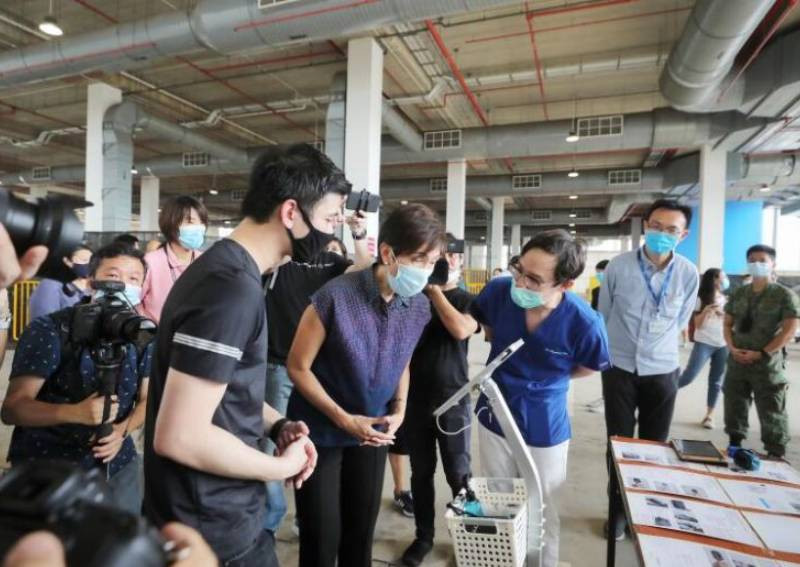Technology to help foreign workers in dorms monitor health amid Covid-19 pandemic: Josephine Teo


SINGAPORE - Foreign workers in dorms are getting help to monitor their health through telemedicine and a gadget that checks oxygen levels.
About 8,000 pulse oximeters have been distributed so far and a further 12,000 will be given out, said Manpower Minister Josephine Teo on Sunday (May 10).
The devices monitor a person's oxygen level and can help detect early signs of a deterioration in health.
Monitoring is seen as the next step in containing the coronavirus outbreak, which has predominantly affected foreign workers.
"Now having stabilised the situation as well as strengthened the medical support, we now need to plan for the next phase," said Mrs Teo.
This involves helping workers make a full recovery and facilitate their eventual return to work.
"A very important aspect of this recovery phase will be how to strengthen the health monitoring and the health surveillance in our dormitories in particular," said Mrs Teo, who was speaking during a visit to JTC Space @ Tuas, where a carpark that has been converted into a medical post for foreign workers will be operational from Monday.
A medical post has doctors and other staff on duty to address the healthcare needs of foreign workers who have acute respiratory infection symptoms such as fever and coughs.
"We are introducing new measures that will help us... do the health surveillance... in a more comprehensive way," said Mrs Teo.
"We hope that by doing so we will be able to help the individual worker prevent a recurrence if he has already been infected or for those who have not been infected, to prevent them from falling sick in the first place."
The monitoring process includes tele-consultation services available to workers in dormitories through their mobile phones. They can fill in an online form and a doctor will video call them back in two hours.
Around 400 such consultations have been conducted since April 25.
The doctors are from the nine private healthcare providers under the Ministry of Health's regulatory sandbox.
Tele-consultation services will be available even when on-site medical facilities or external Public Health Preparedness Clinics are closed for the day.
Mrs Teo toured the Tuas medical post, which has a swab isolation facility where foreign workers who are tested are kept in isolation before receiving their results.

The facility has capacity for 150 workers, where 120 places are for those awaiting results.
The JTC Space @ Tuas medical post facility is the fifth of its kind. The others are at Woodlands, Kranji, Tuas South and Kaki Bukit.
They can cater to about 75,000 foreign workers in factory-converted dorms and other temporary on-site quarters.
The facilities at JTC Space @ Tuas, Kranji and Tuas South also have swab isolation capacity.
All 43 purpose-built dormitories have their own onsite medical facilities to meet the needs of 200,000 workers.
There are also eight tele-kiosks set up at dorms with more to come to ensure round-the-clock access to a doctor, said the Ministry of Manpower.
The kiosks facilitate video consultations with doctors and are connected to devices that can monitor vital signs such as blood pressure, oxygen saturation and temperature.
The Health Ministry announced 876 new cases of Covid-19 in Singapore on Sunday.
A vast majority of these continue to be work permit holders living in dorms.
For the latest updates on the coronavirus, visit here.
This article was first published in The Straits Times. Permission required for reproduction.